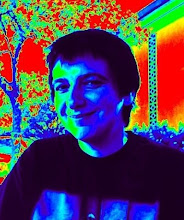The Perseid radiant

It's that time of the year when the Earth passes through a shower of fragments of the Swift-Tuttle comet. It is known in some parts of the world as the night of St.Lawrence, but whether some cultures have traditionally seen in it the tears of a saint, or linked it in some way to the myth of Perseus, from the constellation near which the radiant point appears to be located in the night sky, the meteor shower is one of the recurrent markings of our cosmic proximity with other celestial bodies and of the intricate dynamics that govern the many objects comprising our solar system.

I take the occasion to follow a fleeting mental association and report briefly on two theater plays I've recently read, not seen performed unfortunately. The first is the remarkable "Ursa Major" by linguist Robert Bringhurst. The piece is planned for a performance consisting of a vocal polyphony accompanied by dance. The voices speak in Greek, Latin, English, and Cree, one of the main native languages of Canada. The theme revolves around mythologies of the night sky, associated to the Ursa Major constellation, Arcturus, the nymph Callisto, merging with the Cree version of the myth of the bear-woman. The result is beautiful and lyrical, and I regret that it is one of those plays it seems unfortunately hard to imagine being performed frequently. It is also a reminder of how all human cultures have projected their myths hopes and fears upon those irregular configurations of stars in the night sky that we call constellations. The wish to be connected to the cosmos is a strong component of the human spirit and the merging of mythology and astronomical observation served for a long period of human history as the natural outlet for that longing.

The second play I read over dinner last night is "In the matter of J.Robert Oppenheimer", a beautiful and moving play written by Heinar Kipphardt, based on the transcripts of the three weeks long hearings of the committee appointed in 1954 by the Atomic Energy Commission to decide on whether the top-security clearance granted to Oppenheimer should have been discontinued, as in the end it was. The climate of Cold War paranoia, the fear of Communisms and left-wing ideals, the climate of suspicion and intimidation that interpreted the natural moral scruples of so many scientists against developing yet more powerful weapons of mass destruction in the form of the H-bomb as a form of treason and disloyalty to the country, while the hawks like Teller prospered, as portrayed in a very touching and lucid manner in the play. The moral responsibility of science and the impossible position of nuclear physics at the start of the Cold War also are described in a rich and profound manner, which leaves all the ambiguities intact, those of Oppenheimer, Bethe, and Teller himself. The Faustian bargain between science and the military that brought the world on the brink of extinction in dissected in its fundamental historic essence. It is another play one wishes one could see performed frequently, whereas, alas, even finding the published script is difficult these days.
I would certainly be a much more frequent theater goer if this type of plays were the order of the day in our playhouses.


<< Home